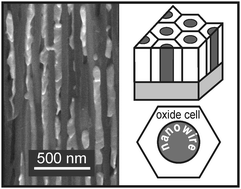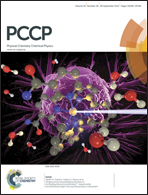Melting temperature of metal polycrystalline nanowires electrochemically deposited into the pores of anodic aluminum oxide
Abstract
The arrays of metallic nanowires are considered as promising precursors for 1D semiconductor nanostructures after appropriate treatment at temperatures close to the melting point. Therefore the melting behaviour of the metallic structures in oxide templates is a key parameter for the subsequent conversion process. The present paper focuses on understanding of the effect of mechanical stress generated during heating on the melting point of the metal nanowires deposited into the pores of anodic alumina. Extremely high local compressive stress appears due to the difference in the thermal coefficients of the oxide template and nanowires inside the pores. The effect of the composite structural parameter that may be related to the concentration of nanowires on the melting temperature has been investigated. A numerical model predicting the melting point has been developed for composites with indium, tin, and zinc nanowires. The simulation results obtained using the suggested model were compared with the experimental data.



 Please wait while we load your content...
Please wait while we load your content...